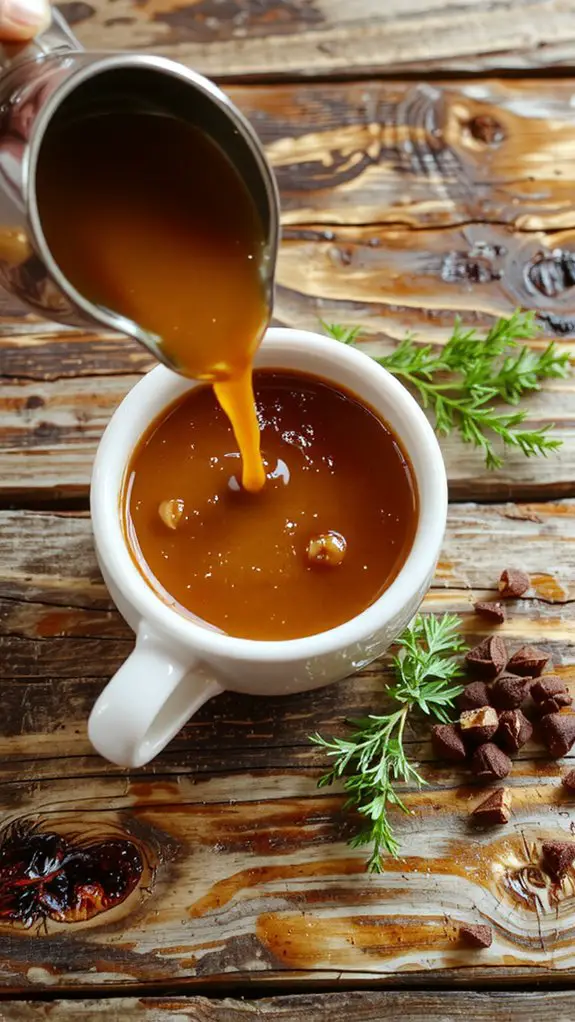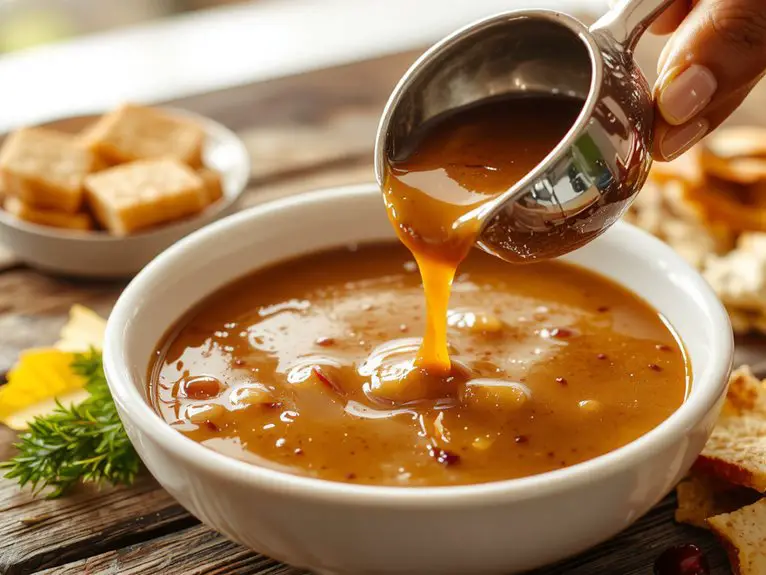Perfecting gravy has always been a challenge for me, but I’ve found a method that brings out its rich, savory essence without overwhelming complexity. The secret lies in balancing flavors and textures, transforming simple ingredients into something extraordinary. There’s a twist I use that elevates it beyond the usual recipes—an addition you might not expect. Let me walk you through how I make mine, and you might just discover a new favorite for your next meal.
Recipe
This homemade gravy is the ultimate comfort food staple, and I’m not exaggerating when I say it’s life-changing. Forget the store-bought stuff—this recipe delivers a rich, velvety sauce that’s packed with flavor and practically hugs your mashed potatoes (or turkey, or biscuits) with warmth.
The secret? A perfect roux made with butter and flour, whisked until golden and fragrant, then slowly simmered with broth until it’s luxuriously smooth. It’s the kind of gravy that transforms a meal into something unforgettable—savory, silky, and downright irresistible.
Whether you’re a beginner or a seasoned cook, this recipe is foolproof and forgiving, so there’s no reason not to whip it up. Trust me, once you taste this, you’ll never go back to the jar. Let’s get whisking!
Ingredients
To make the perfect homemade gravy, start with the right ingredients. Quality matters here—fresh, simple components will elevate your gravy from basic to unforgettable. Here’s what you’ll need and why each one counts:
- Pan drippings: The secret to rich, flavorful gravy. Use drippings from roasted meat (like chicken, turkey, or beef) for an intensely savory base. *No drippings?* Use unsalted butter or ghee as a substitute.
- All-purpose flour: Acts as the thickening agent. A 1:1 ratio of fat to flour is key for the right consistency. *Gluten-free?* Swap with cornstarch or a gluten-free flour blend.
- Broth or stock: Choose chicken, beef, or vegetable depending on your dish. Homemade stock is ideal, but a high-quality store-bought version works too. *Tip:* Warm it up before adding to prevent lumps.
- Salt and black pepper: Essential for seasoning. Always taste as you go to avoid over-salting.
- Fresh herbs: Optional but highly recommended. Rosemary, thyme, or sage add depth and aroma. *No fresh herbs?* Dried herbs can work in a pinch, but use half the amount.
- Worcestershire sauce or soy sauce: A splash adds umami complexity. *Bonus:* Soy sauce is a great vegetarian alternative.
- Heavy cream or milk: For a creamy, velvety texture. *Tip:* Heavy cream creates a richer finish, but milk works for a lighter version.
These ingredients come together to create a gravy that’s rich, smooth, and packed with flavor. Don’t skip the drippings—they’re the backbone of the recipe—and consider adding fresh herbs for that extra chef’s touch.
How to Make the Best Classic Turkey Gravy Recipe

Serve immediately: Pour the gravy into a warmed serving dish and enjoy alongside your turkey and sides.
*Pro Tip:* Keep it warm in a slow cooker or insulated gravy boat if serving later.
Nutrition
This homemade gravy is a flavorful addition to any meal. Here’s the nutritional breakdown per serving:
| Nutrient | Amount per Serving |
|---|---|
| Calories | 50 kcal |
| Total Fat | 3 g |
| Saturated Fat | 1 g |
| Cholesterol | 5 mg |
| Sodium | 300 mg |
| Carbohydrates | 4 g |
| Fiber | 0 g |
| Sugar | 1 g |
| Protein | 1 g |
Chef Tips
How can I take this homemade gravy from good to great?
I always deglaze the pan with wine or broth to boost flavor.
I whisk in cold butter at the end for richness, strain it for smoothness, and taste as I go, adjusting seasoning.
A splash of soy sauce adds depth, while a pinch of sugar balances acidity.
Simmer gently—never boil—to keep it silky.






